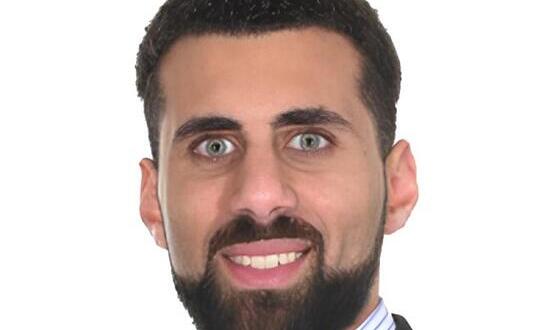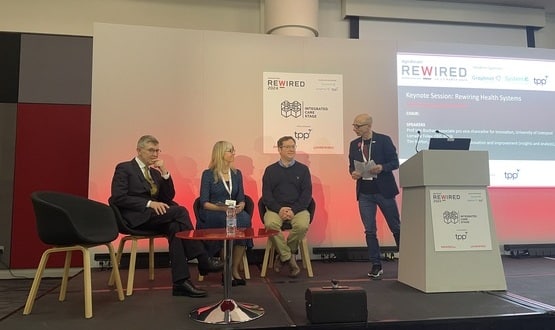Prevention becoming reality: A new approach to supporting patients on the waiting list
- 4 December 2023

An integrated care system is using novel technology to identify patients in greatest need, offer them targeted interventions, and ease the strain on NHS resources. By Professor Rowan Pritchard-Jones
When 65-year-old Wilf needed a gallbladder operation during the height of the pandemic, successive lockdowns combined with his own family commitments, caused delays for his operation.
Typically, gallbladder procedures are considered low risk. But Wilf was identified as having a high risk of deterioration, in a new initiative in Cheshire and Merseyside, called ‘Waiting Well’.
As an ICS, we made the decision to innovate in our use of technology, so that we could find those patients in greatest need of support, as they wait for hospital treatment.
Wilf was one of the first patients to be identified in the programme. We used a risk stratification tool from our technology partner C2-Ai, that combined changing data held in different settings, to reveal those patients at greatest risks of complications.
Our initial focus was to find patients most likely to suffer post-operative chest infections. Wilf was part of that initial cohort. He was invited to take part in targeted prehabilitation before his procedure – receiving bespoke health coaching according to his specific needs.
Not only was his procedure consequently a success, immediately alleviating the pain he had suffered, but Wilf was discharged within a day, rather than the five days in hospital he originally expected. He didn’t suffer complications, and his recovery time was significantly improved.
Effective prehabilitation
Wilf’s experience is like others who have benefitted from this new approach to supporting patients on waiting lists.
The first cohort of patients to take part in the initiative experienced more than a 70% reduction in surgical complications, and no post-operative chest infections, compared to 5% in a control group. They also saw an average five-day reduction in length of stay.
The most effective prehabilitation is when we find those at highest risk of a poor outcome, and support them to avoid that risk becoming a reality. Not only is their own outcome then improved, but we have made the best use of resources that would have been consumed supporting their recovery from post-surgical complications.
Outcomes are not just driven by what we do in the operating theatre, but by the care and preparation that goes into supporting patients before they get anywhere near the anaesthetic room.
Sophisticated prioritisation
Work within the region is also creating new possibilities for prioritising patients for treatment, in addition to supporting them as they wait.
For the last 75 years, patients have been treated in an order based on their time on the waiting list, or sometimes the procedure they are waiting for.
But in the summer of 2020, work began to change this. Pioneering surgeons in some of our hospitals are able to use the same technology seen in the Waiting Well initiative, to quickly identify the highest urgency patients and understand their risk profile.
Highest risk patients were treated over the summer – resulting in better outcomes for those patients, as well as substantial reductions in the need for ICU, bed days, and emergency admissions at a time of intense pressure in the NHS.
This is yet to be fully deployed as a standard way of working. But there is now the potential to identify those patients at highest risk of harm as they wait, and to use a far more sophisticated prioritisation method focused on improving individual outcomes and making best use of resources.
Such an approach is a very different way of working for the NHS. We need to take our colleagues with us if this is to become more widespread, but it allows us to work smarter with patients and better manage their risks.
Right patient, right place, right time
When we first identified those highest risk patients, consultants met with them. Around a third of patients decided they didn’t want a high-risk operation. Others discussed alternative surgical procedures. Another third had the operation because they were able to see the risks of not doing so.
An understanding of risk for each patient also allowed us to also make planning decisions – not to perform too many high-risk procedures on a day when only four high dependency units are available, for example. This approach can help to manage our resources as an ICS.
Understanding the changing risks of each patient, means we can make defendable decisions about where we care for patients. It means we can use those sites with HDU beds for patients that need them the most. And with better understanding of risk, comes fully informed consent.
Prevention becoming reality
A lot of resource in the NHS is spent on dealing with sickness. Building a health service geared up to enable prevention has long been a topic of discussion. When you consider that 80% of your journey to ill health will happen before you ever see a doctor, there is a lot that can be done to influence wider determinants of health. Now we have an important piece of the jigsaw to start to make this reality – we have the tools to help to find people at greatest risk.
We are starting to make much greater use of actionable health intelligence; in other words, taking what we know about our patients and responding to that with a series of actions. And we are doing this to avoid harm, targeting best use of finite NHS resource in a precise way.
The route to successful healthcare in times of constrained resources is to find those in greatest need and make a genuine impact for them before their risk becomes reality. That’s what we are starting to achieve.
Professor Rowan Pritchard-Jones is medical director for NHS Cheshire and Merseyside. He will be speaking at Digital Health Rewired 2024. Find out more and register here.




